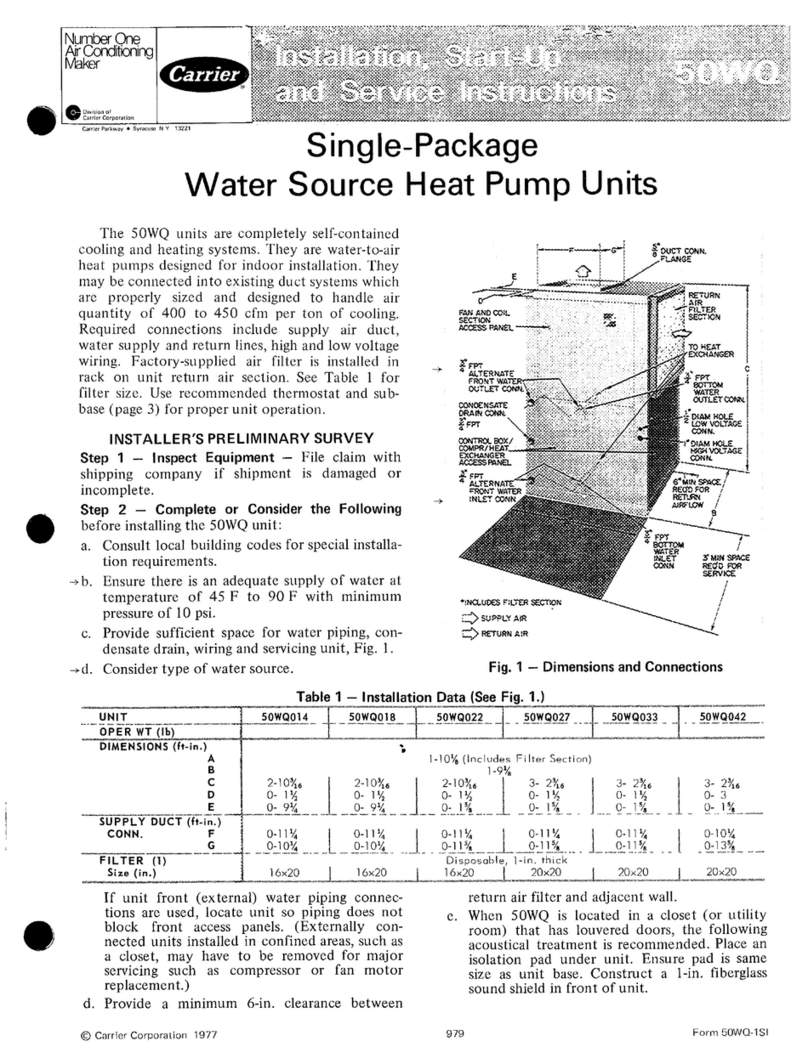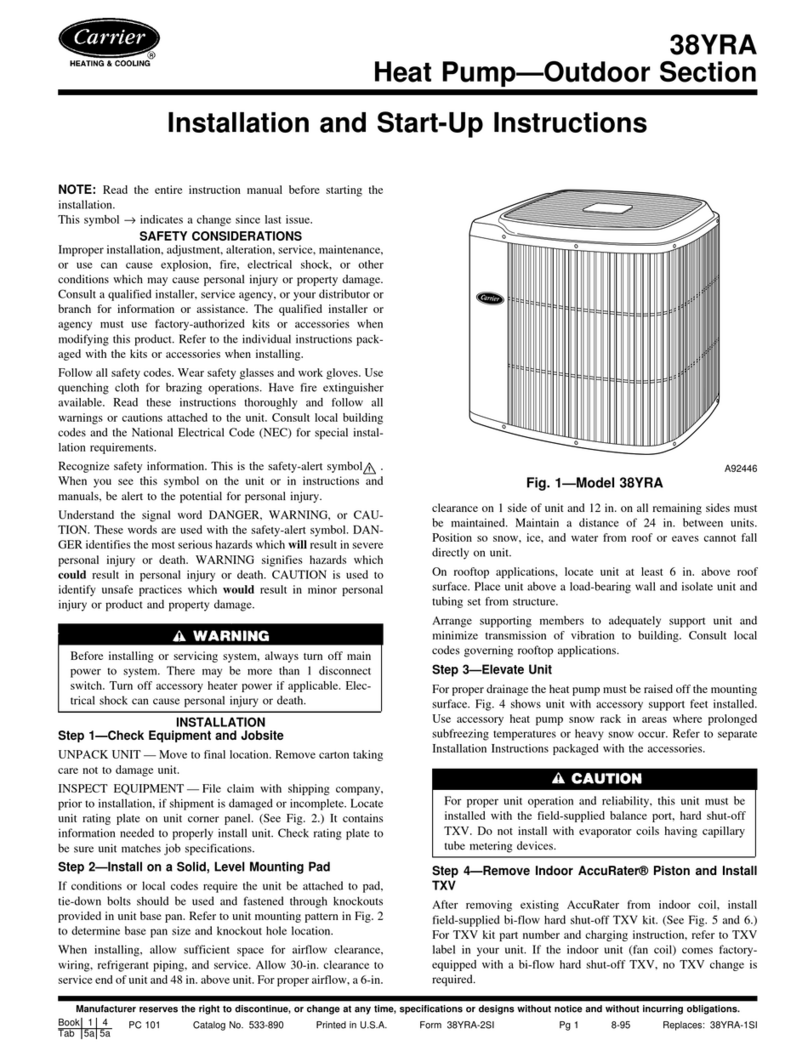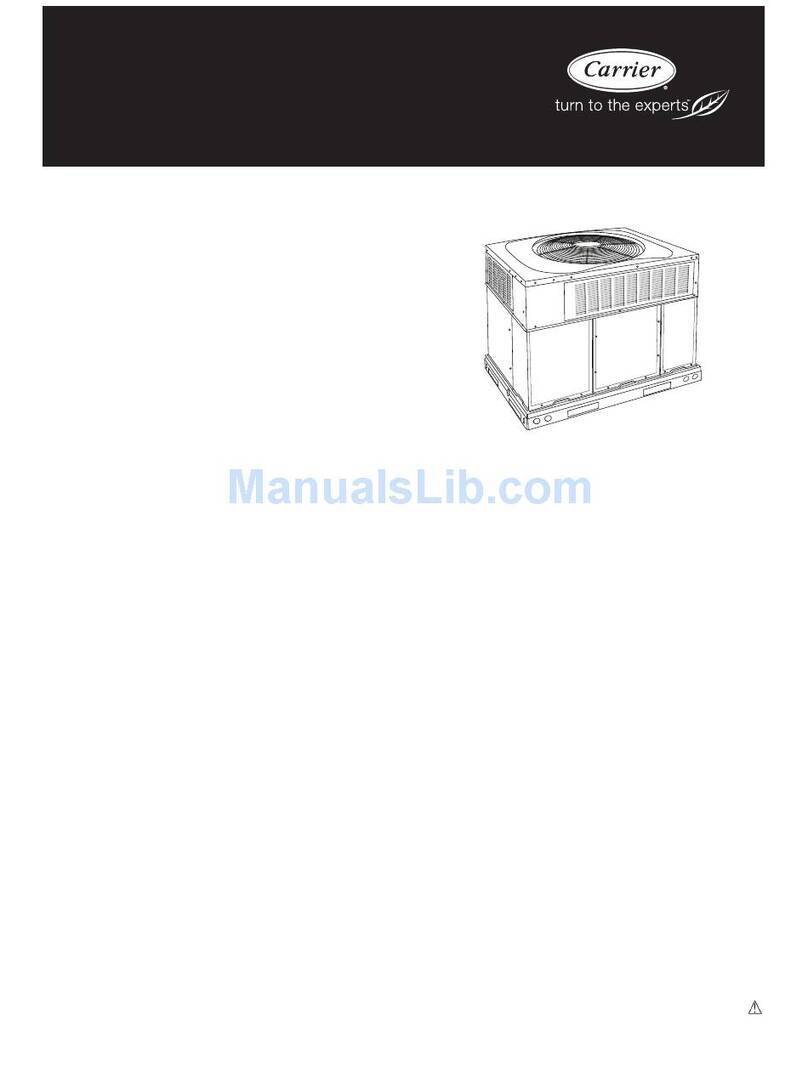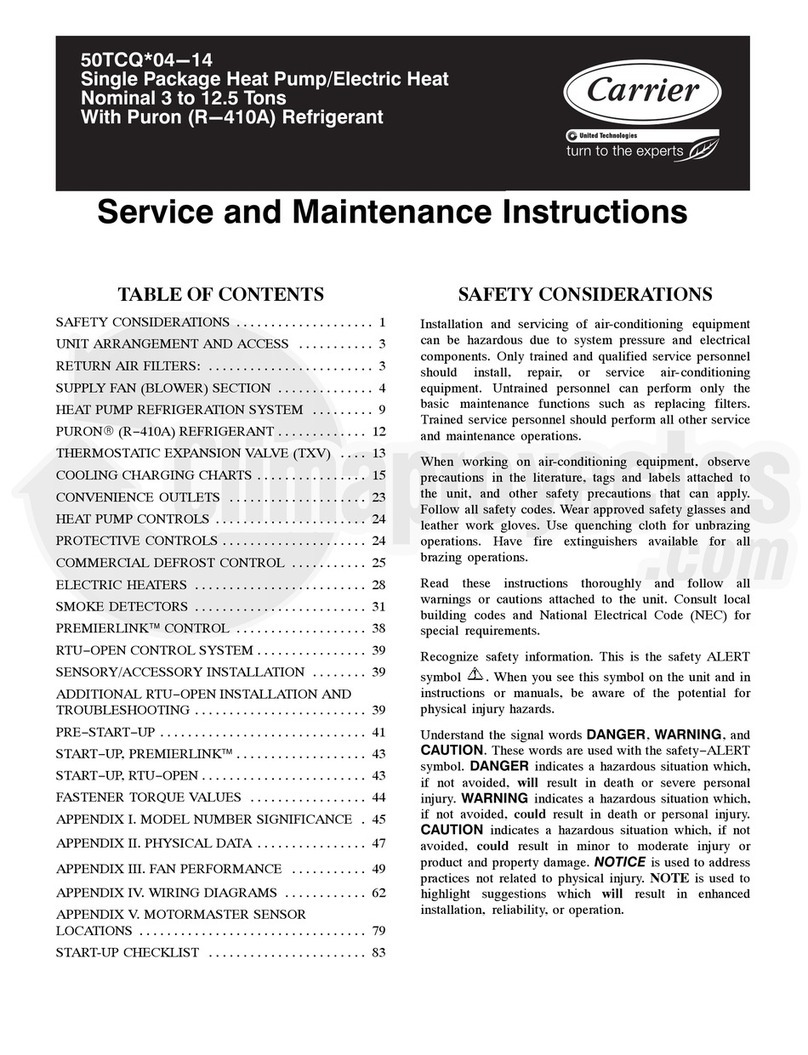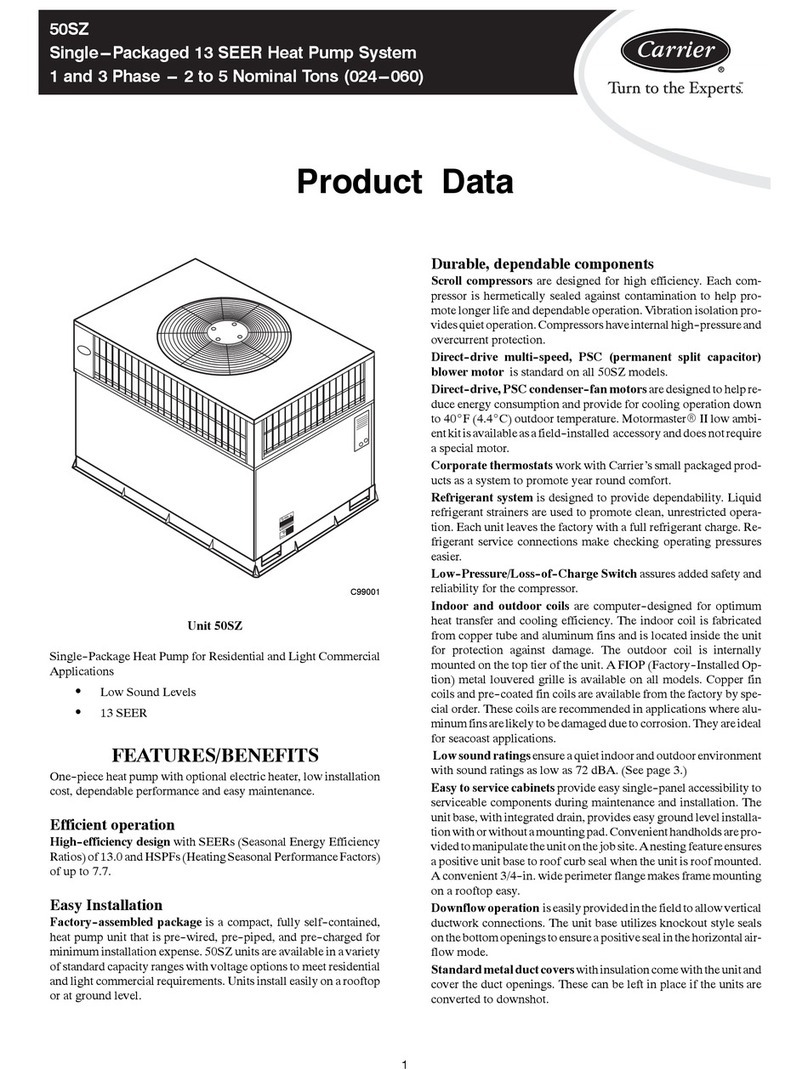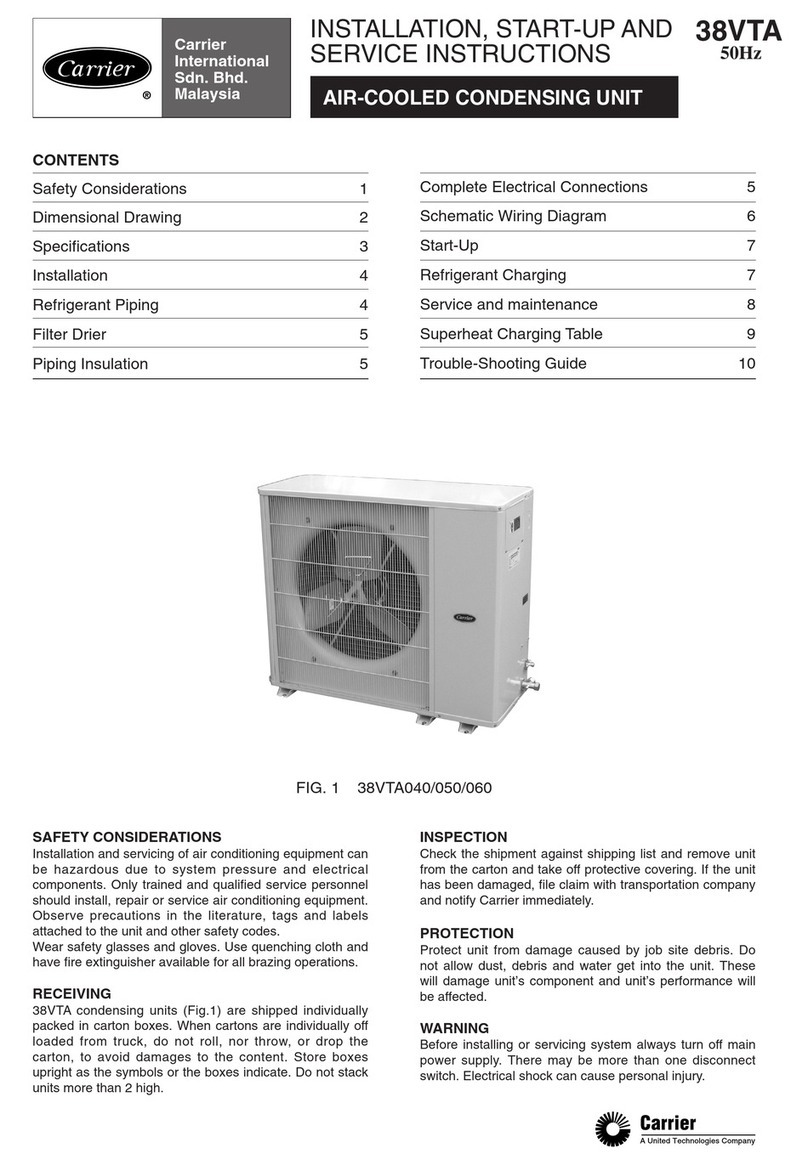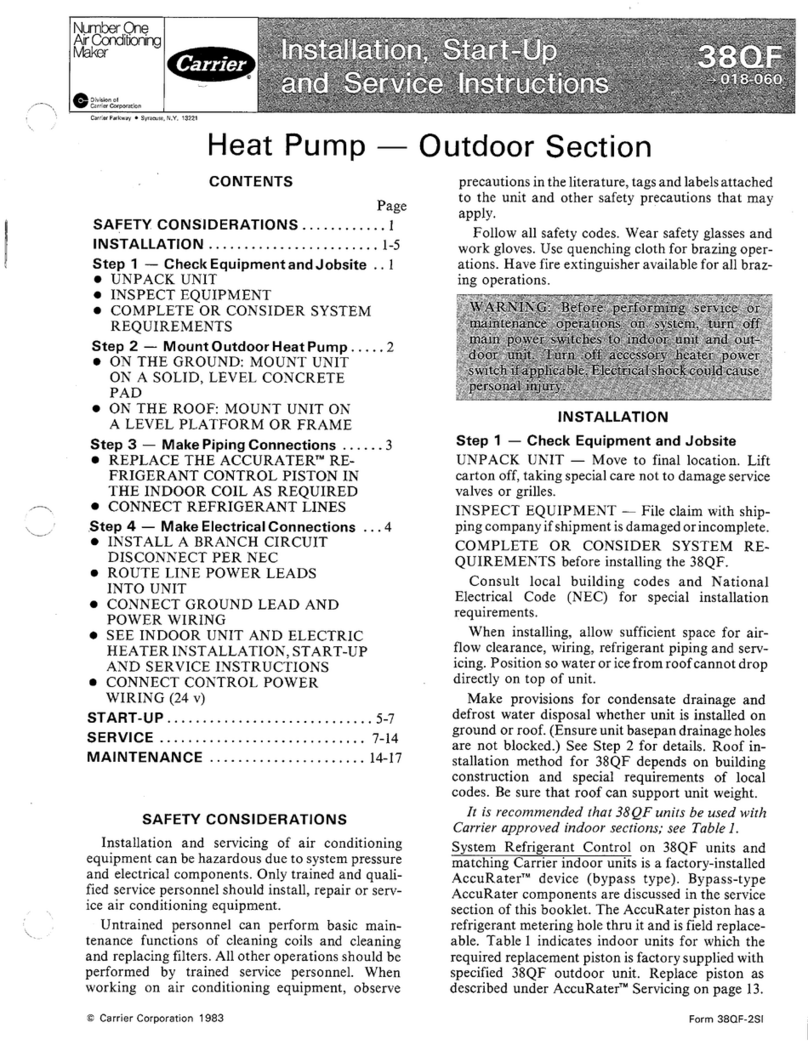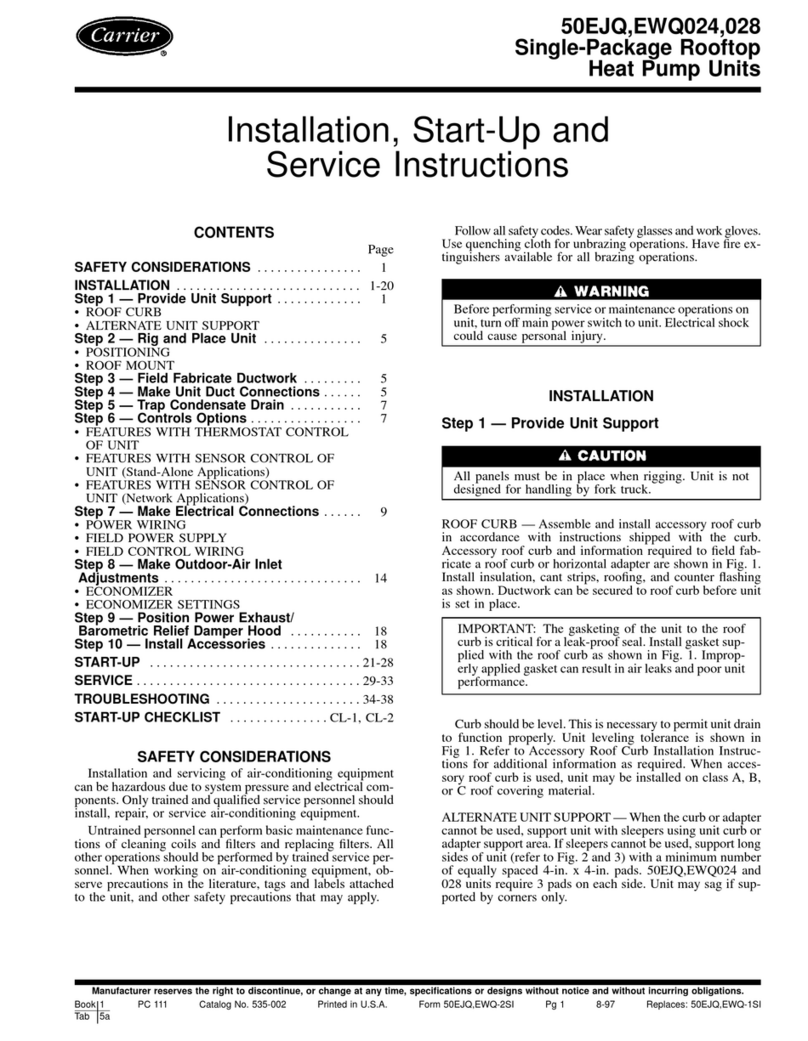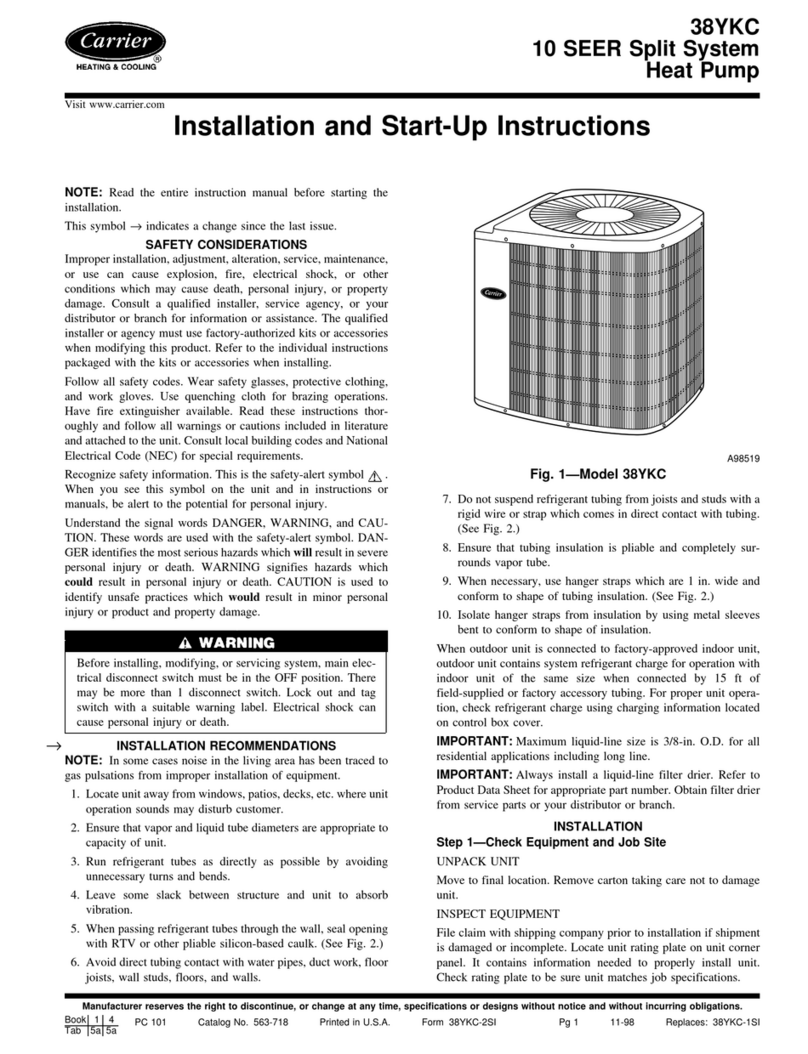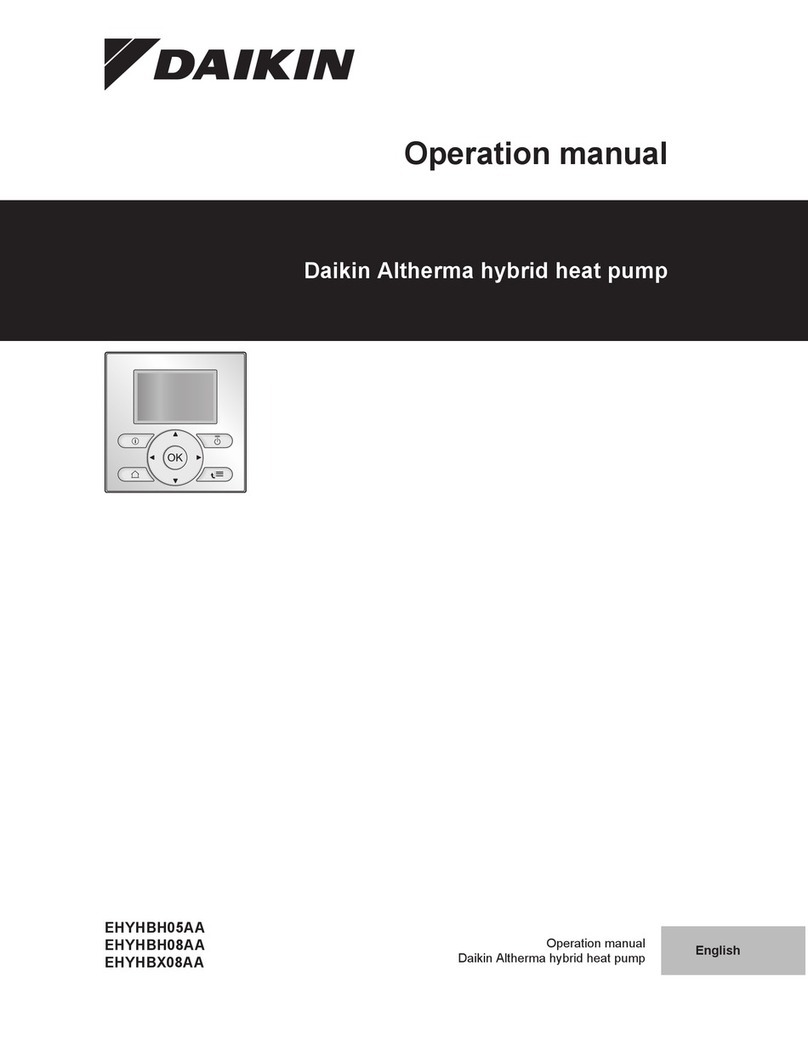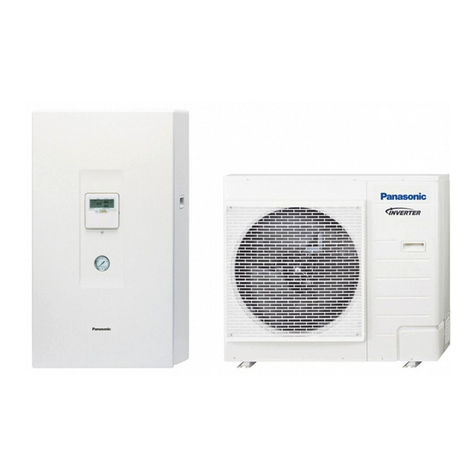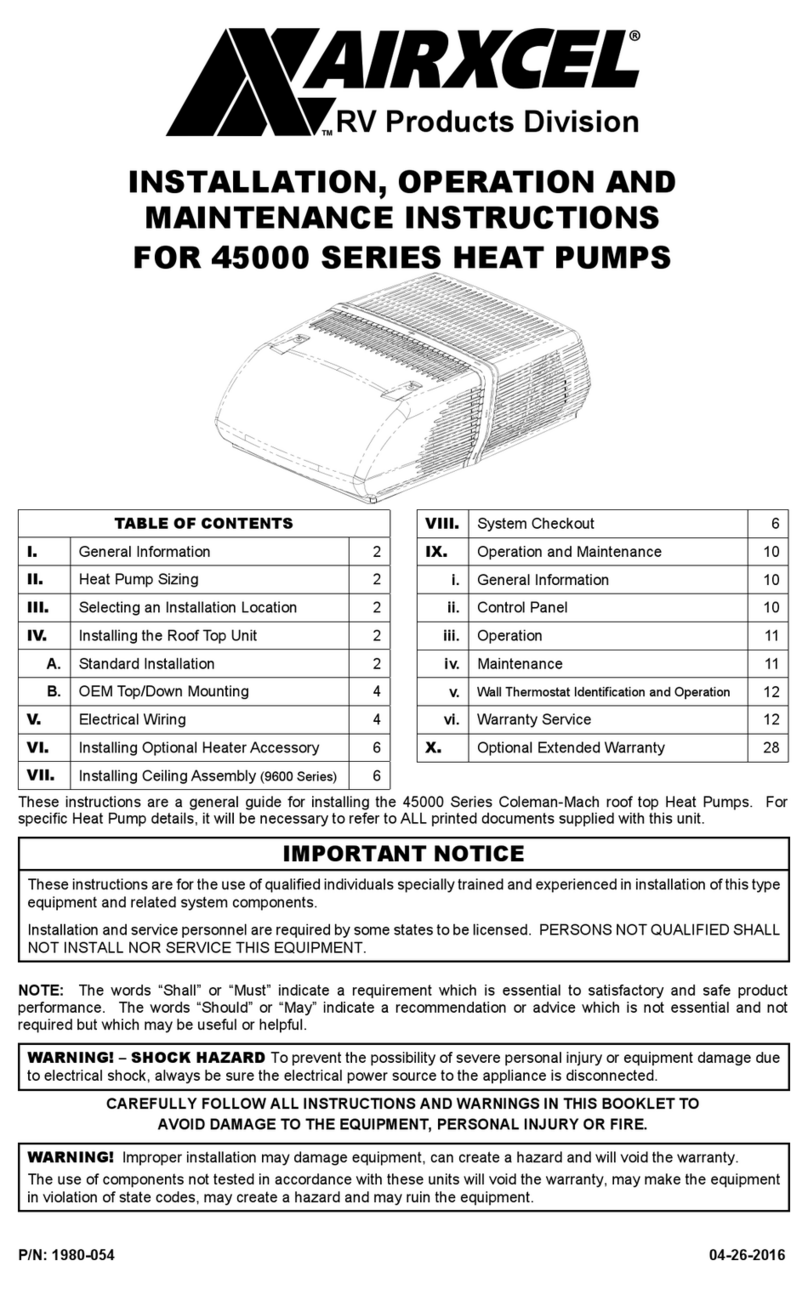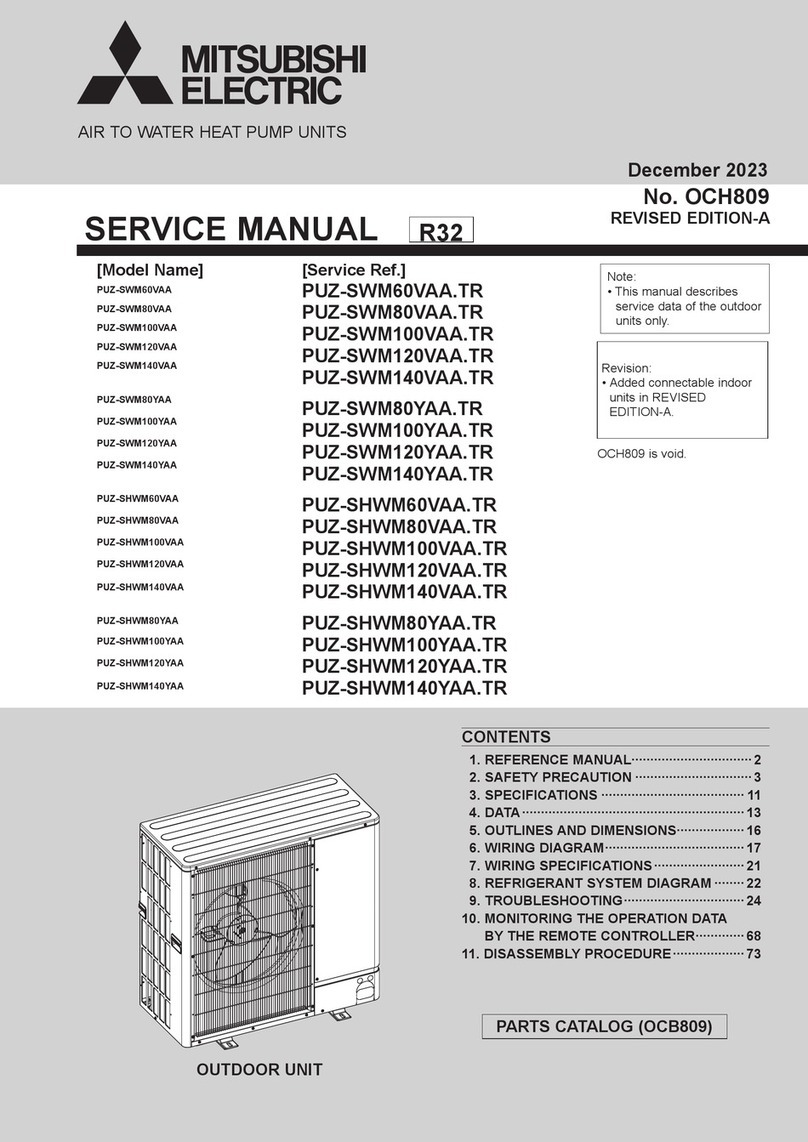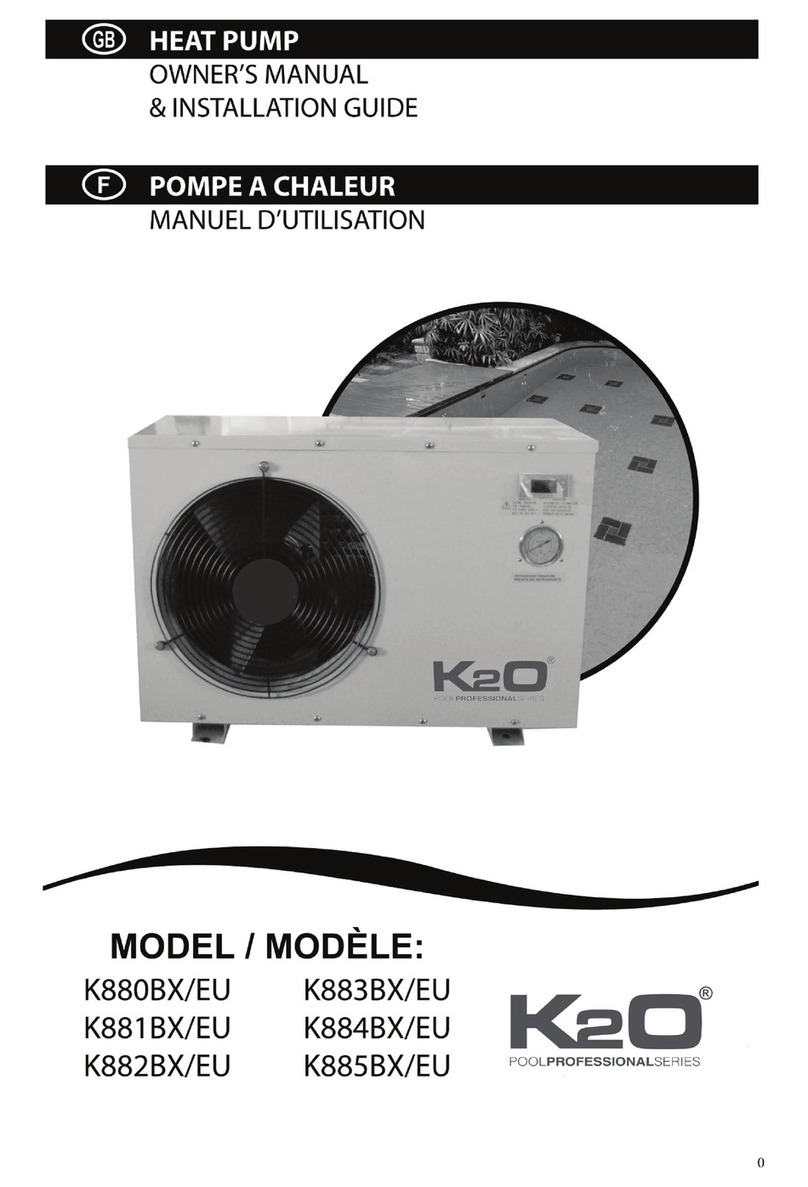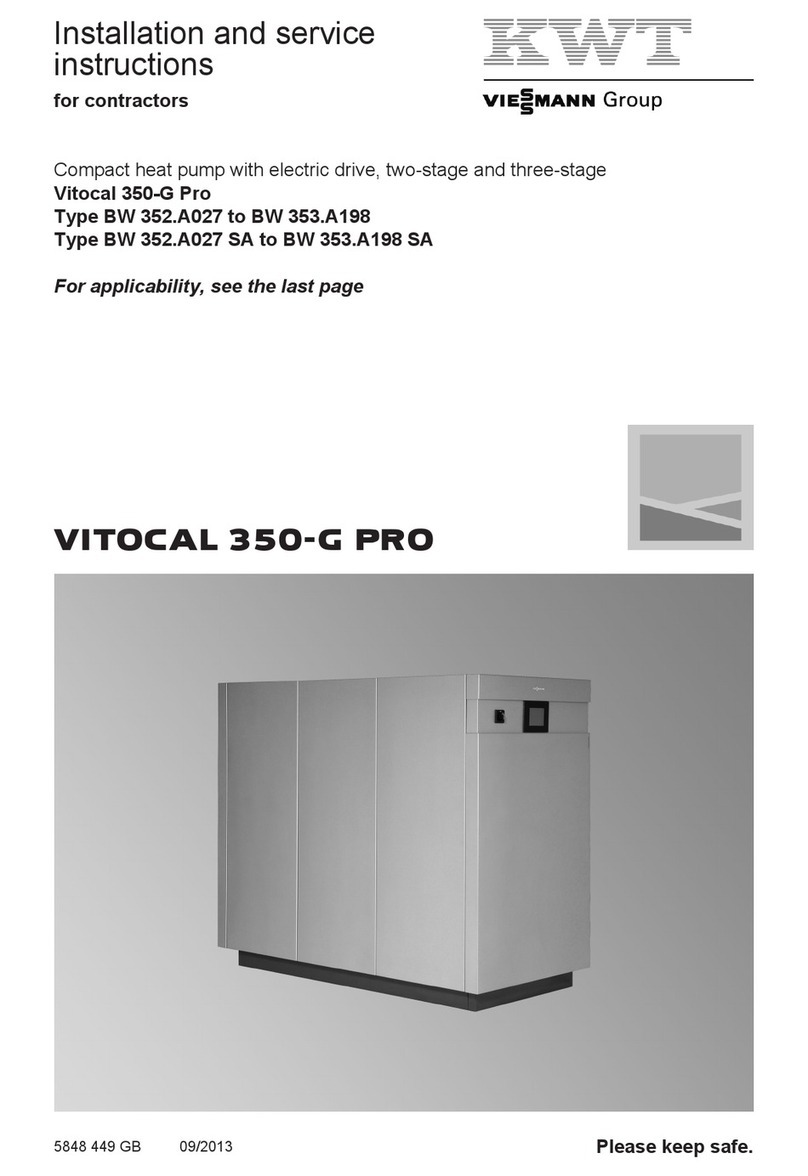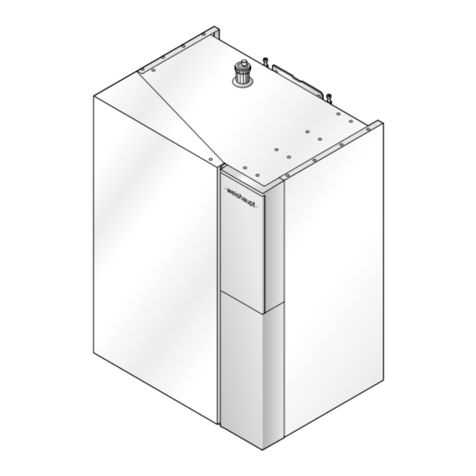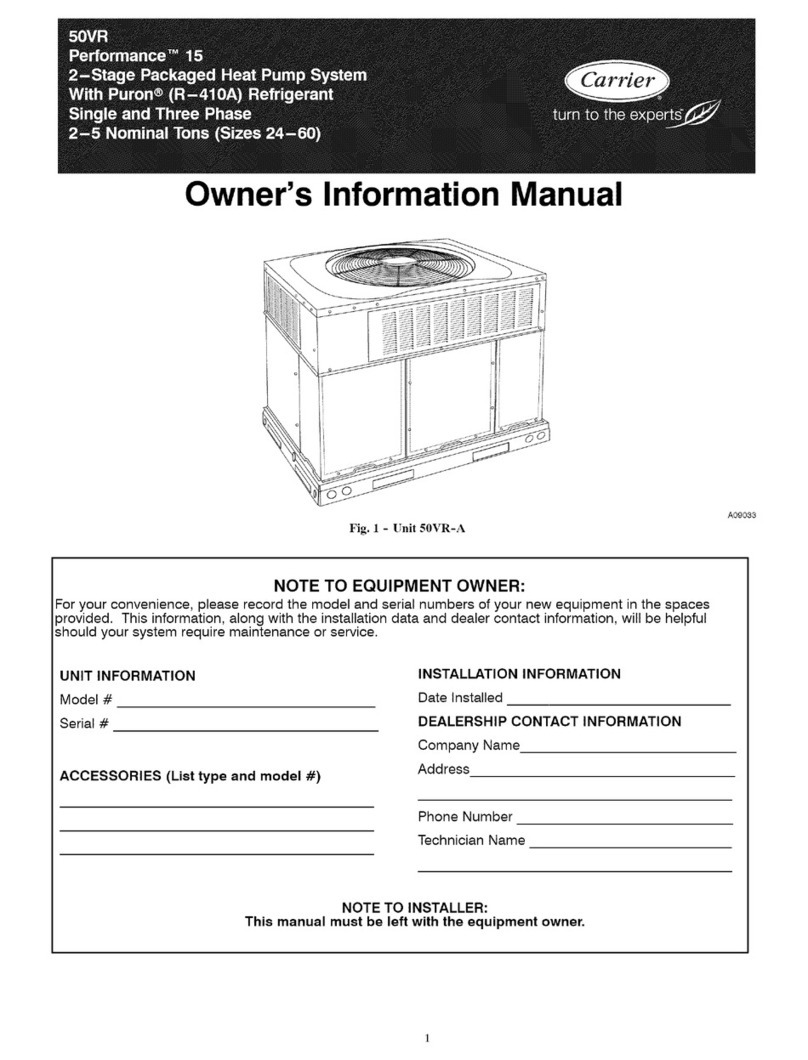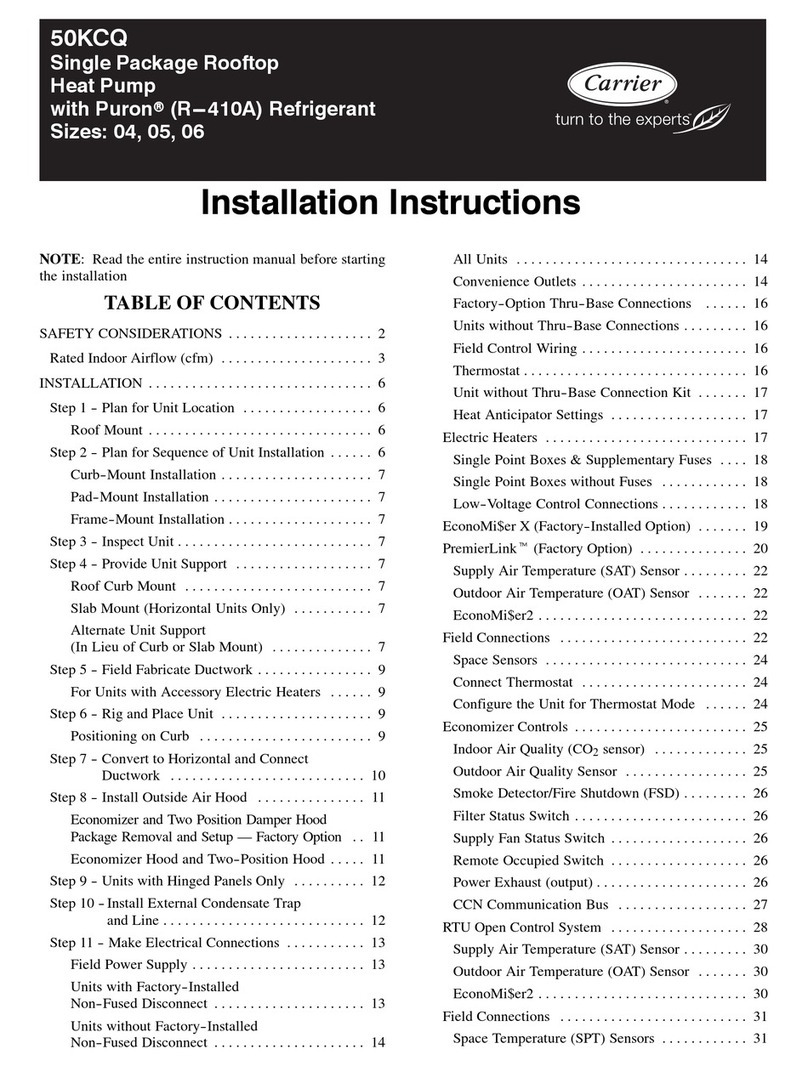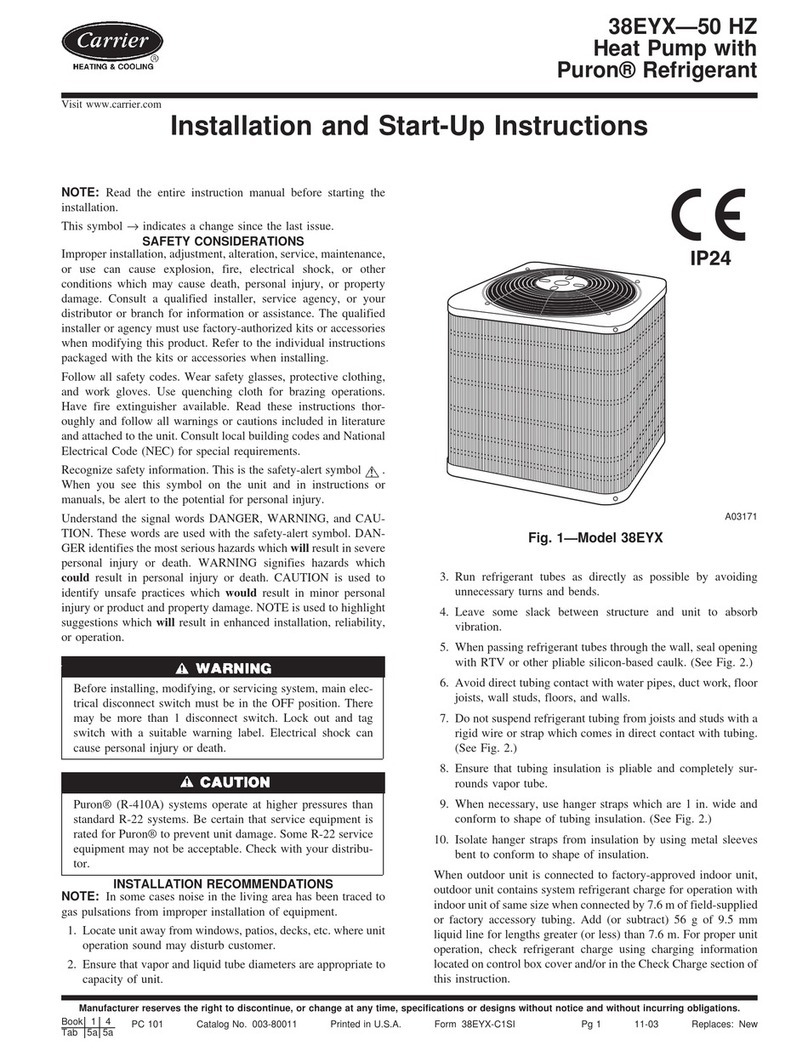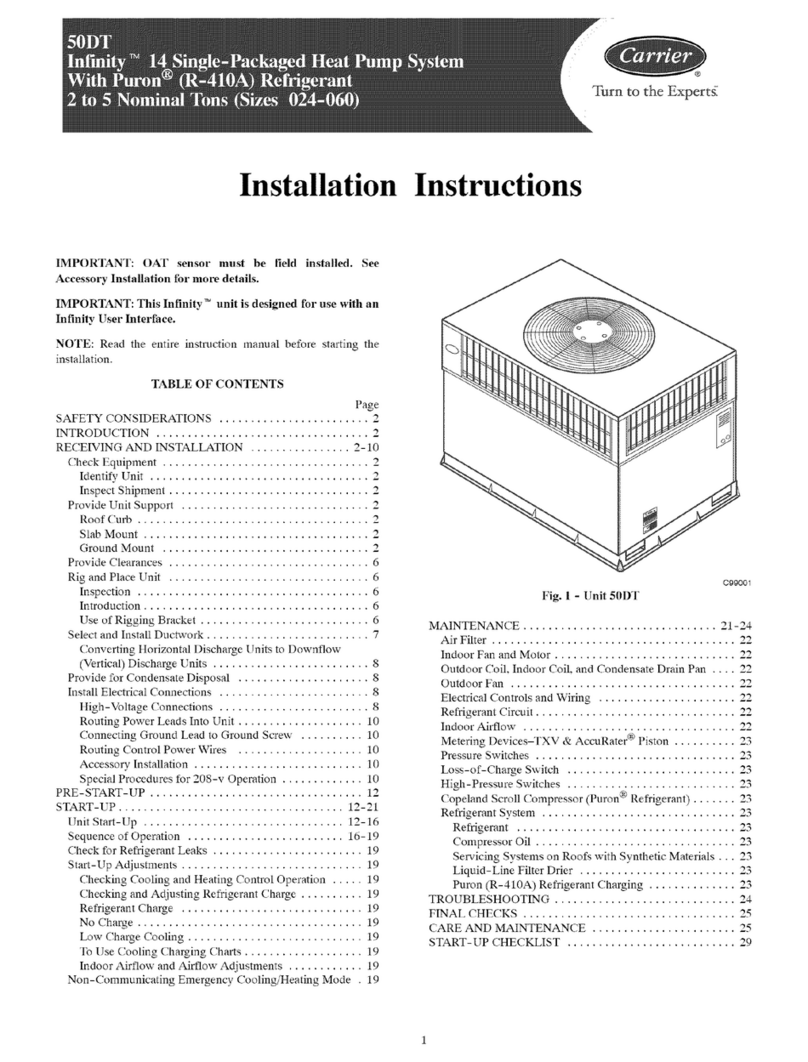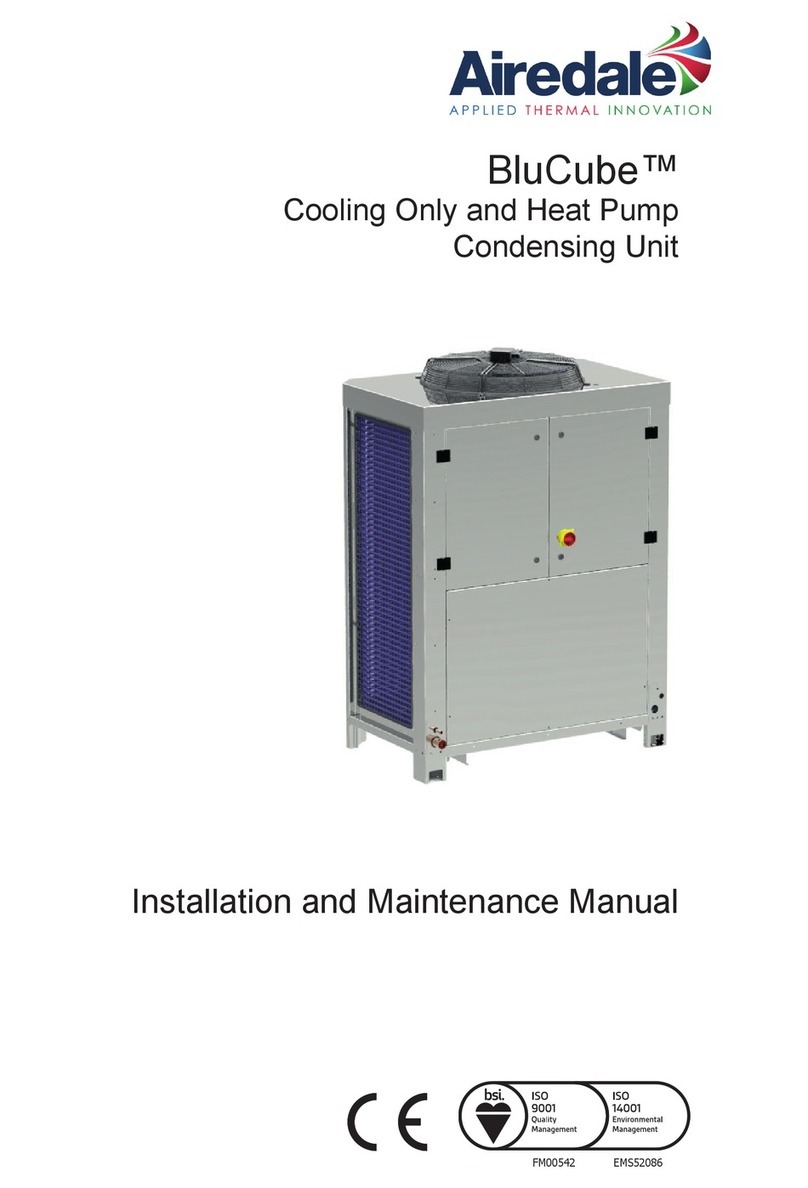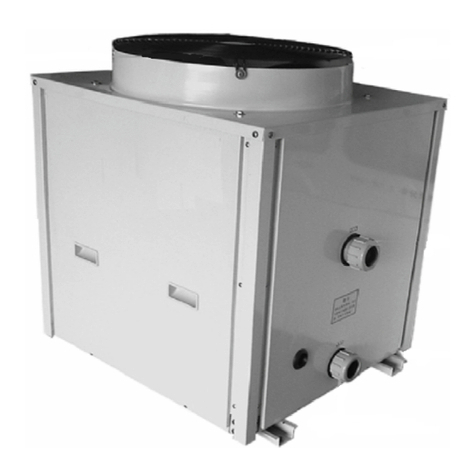3
1 - SAFETY CONSIDERATIONS
Installation and servicing of air-conditioning equipment can be
hazardous due to system pressure and electrical components.
Only trained and qualified service personnel should install, repair,
or service air-conditioning equipment.
Untrained personnel can perform basic maintenance functions of
cleaning coils and filters and replacing filters.All other opera-
tions should be performed by trained service personnel. When
working on air-conditioning equipment, observe precautions in
the literature, tags and labels attached to the unit, and other
safety precautions that may apply.
Improper installation, adjustment, alteration, service, maintenance,
or use can cause explosion, fire, electrical shock or other con-
ditions which may cause personal injury or property damage.
Consult a qualified installer, service agency, or your distributor
or branch for information or assistance. The qualified installer
or agency must use factory-authorized kits or accessories when
modifying this product. Refer to the individual instructions
packaged with the kits or accessories when installing.
Follow all safety codes. Wear safety glasses and work gloves. Use
quenching cloth for brazing operations. Have fire extinguisher
available. Read these instructions thoroughly and follow all
warnings or cautions attached to the unit. Consult local building
codes and electrical codes for special installation requirements.
WARNING: Electrical shock can cause personal injury or
death. Before installing or servicing system, always turn off
main power to system. There may be more than one disconnect
switch. Turn off accessory heater power if applicable.
2 - GENERAL
Water-source heat pump units are single-package horizontal
mounted units with electronic controls designed for year-round
cooling and heating. Aquazone 50RHE water-source heat pump
units are designed for high-efficiency operation using HFC-407C
refrigerant.
IMPORTANT: The installation of water-source heat pump
units and all associated components, parts and accessories
which make up the installation shall be in accordance with
the regulations of ALL authorities having jurisdiction and
MUST conform to all applicable codes. It is the responsibility
of the installing contractor to determine and comply with
ALL applicable codes and regulations.
3 - INSTALLATION
3.1 - Check jobsite
Installation, operation and maintenance instructions are provided
with each unit. Before unit start-up, read all manuals and become
familiar with the unit and its operation. Thoroughly check out
the system before operation. Complete the inspections and
instructions listed below to prepare a unit for installation. See
Table 1 for unit physical data.
Horizontal units are designed for indoor installation only. Be sure
to allow adequate space around the unit for servicing. See Fig. 1
for overall unit dimensions. Refer to Fig. 2 for an illustration of
a typical horizontal installation.
CAUTION: To avoid equipment damage, do not use these
units as a source of heating or cooling during the construction
process. The mechanical components and filters used in these
units quickly become clogged with construction dirt and debris
which may cause system damage.
3.2 - Check unit
Upon receipt of shipment at the jobsite, carefully check the ship-
ment against the bill of lading. Make sure all units have been
received. Inspect the carton or crating of each unit, and inspect
each unit for damage. Ensure the shipping company makes
proper notation of any shortages or damage on all copies of the
freight bill. Concealed damage not discovered during unloading
must be reported to the shipping company within 15 days of
receipt of shipment.
NOTE: It is the responsibility of the purchaser to file all
necessary claims with the shipping company.
1. Verify unit is correct model for entering water temperature
of job.
2. Be sure that the location chosen for unit installation provides
ambient temperatures maintained above freezing. Well
water applications are especially susceptible to freezing.
3. Be sure the installation location is isolated from sleeping
areas, private offices and other acoustically sensitive spaces.
NOTE: A sound control accessory package may be used to
help eliminate sound in sensitive spaces.
4. Check local codes to be sure a secondary drain pan is not
required under the unit.
5. Be sure unit is mounted at a height sufficient to provide an
adequate slope of the condensate lines. If an appropriate
slope cannot be achieved, a field-supplied condensate pump
may be required.
6. Provide sufficient space for duct connection.
7. Provide adequate clearance for filter replacement and drain
pan cleaning. Do not allow piping, conduit, etc. to block
filter access.
8. Provide sufficient access to allow maintenance and servicing
of the fan and fan motor, compressor and coils. Removal
of the entire unit from the closet should not be necessary.
9. Provide an unobstructed path to the unit within the closet
or mechanical room. Space should be sufficient to allow
removal of unit if necessary.


